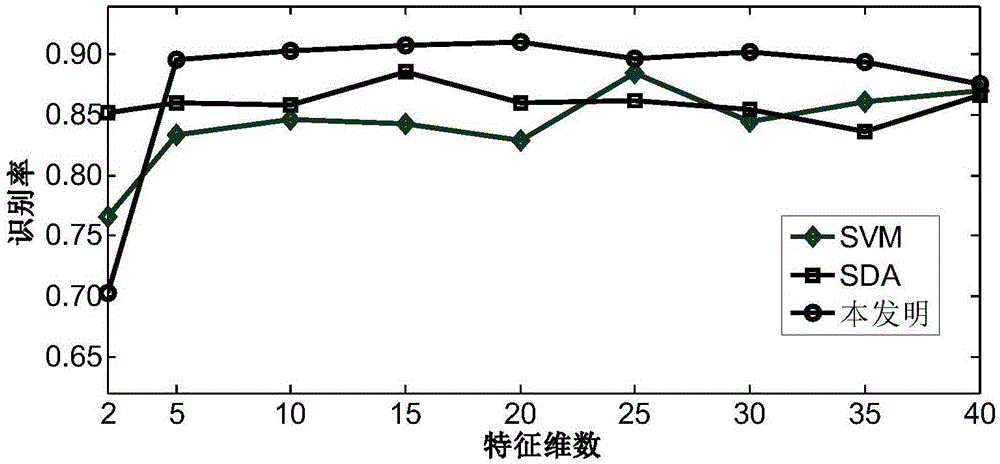Radar high-resolution range profile target recognition method based on MMFA model
A high-resolution range image and radar technology, applied in the field of radar, to achieve the effect of improving nonlinear classification, reducing dimensionality, and supervising and predicting work can be divided and reasonable
- Summary
- Abstract
- Description
- Claims
- Application Information
AI Technical Summary
Problems solved by technology
Method used
Image
Examples
Embodiment Construction
[0039] Proposed MMFA in the present invention is to unify FA model, LVSVM to carry out joint solution under Bayesian frame, wherein, LVSVM (LatentvariableSVM, latent variable SVM) is used as classifier, see [PolsonN.G., ScottS.L..Dataaugmentationforsupportvectormachines [J].BayesianAnalysis, 2011, vol.6(1), 1-24], introduce FA model to achieve.
[0040] refer to figure 1 , the specific implementation of the present invention includes two parts: training phase and testing phase. Among them, the task of the training phase is to estimate the parameters of the MMFA model. After the training phase, the task of the testing phase is to perform the rejection task first, and finally output the category label of the target to complete the recognition task.
[0041] 1. Training stage
[0042] Step 1: Receive the high-resolution range image HRRP of the radar target.
[0043] The radar receives the radar target high-resolution range profile HRRP of M category, and the target radar high-...
PUM
 Login to View More
Login to View More Abstract
Description
Claims
Application Information
 Login to View More
Login to View More - Generate Ideas
- Intellectual Property
- Life Sciences
- Materials
- Tech Scout
- Unparalleled Data Quality
- Higher Quality Content
- 60% Fewer Hallucinations
Browse by: Latest US Patents, China's latest patents, Technical Efficacy Thesaurus, Application Domain, Technology Topic, Popular Technical Reports.
© 2025 PatSnap. All rights reserved.Legal|Privacy policy|Modern Slavery Act Transparency Statement|Sitemap|About US| Contact US: help@patsnap.com



